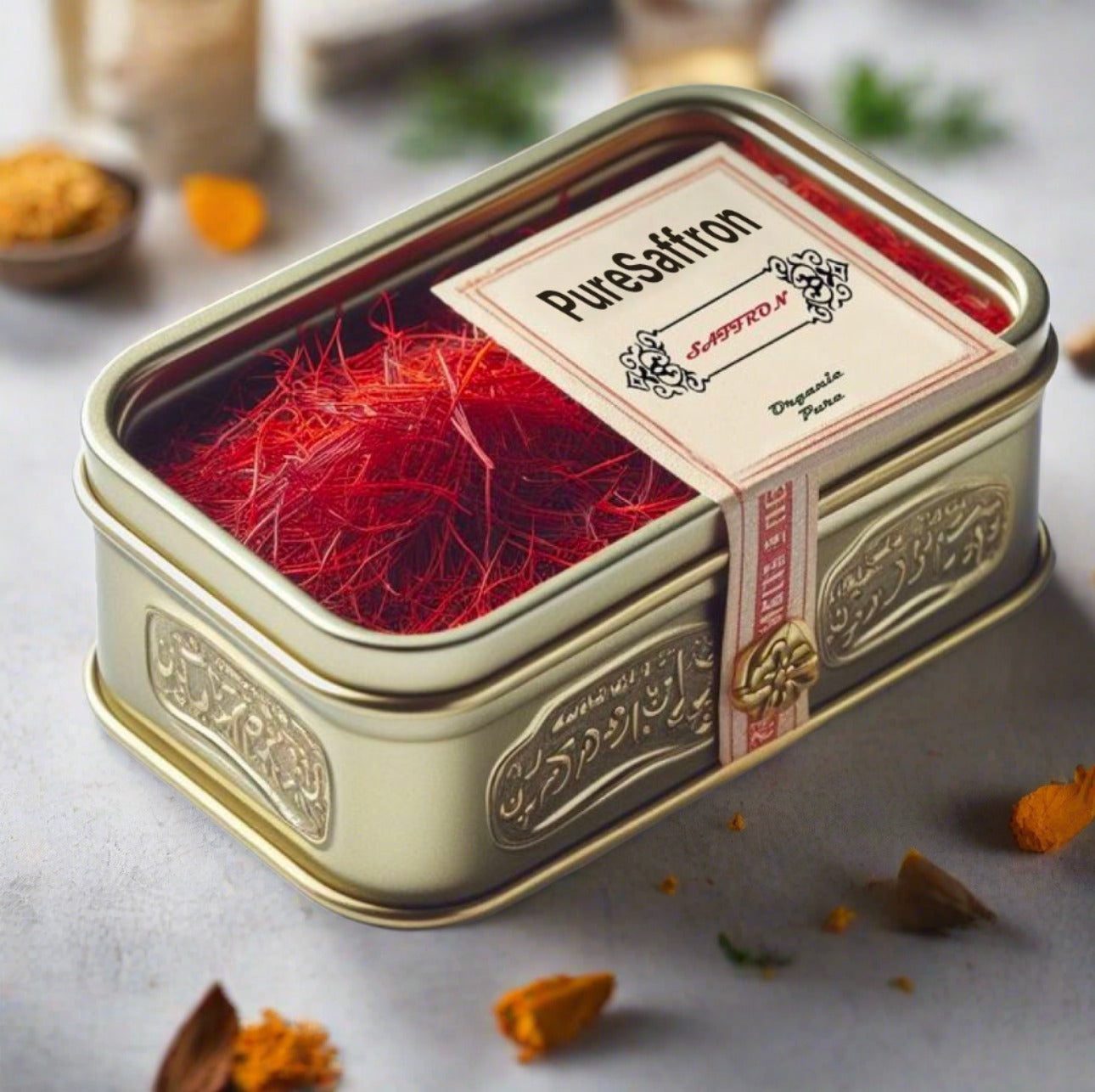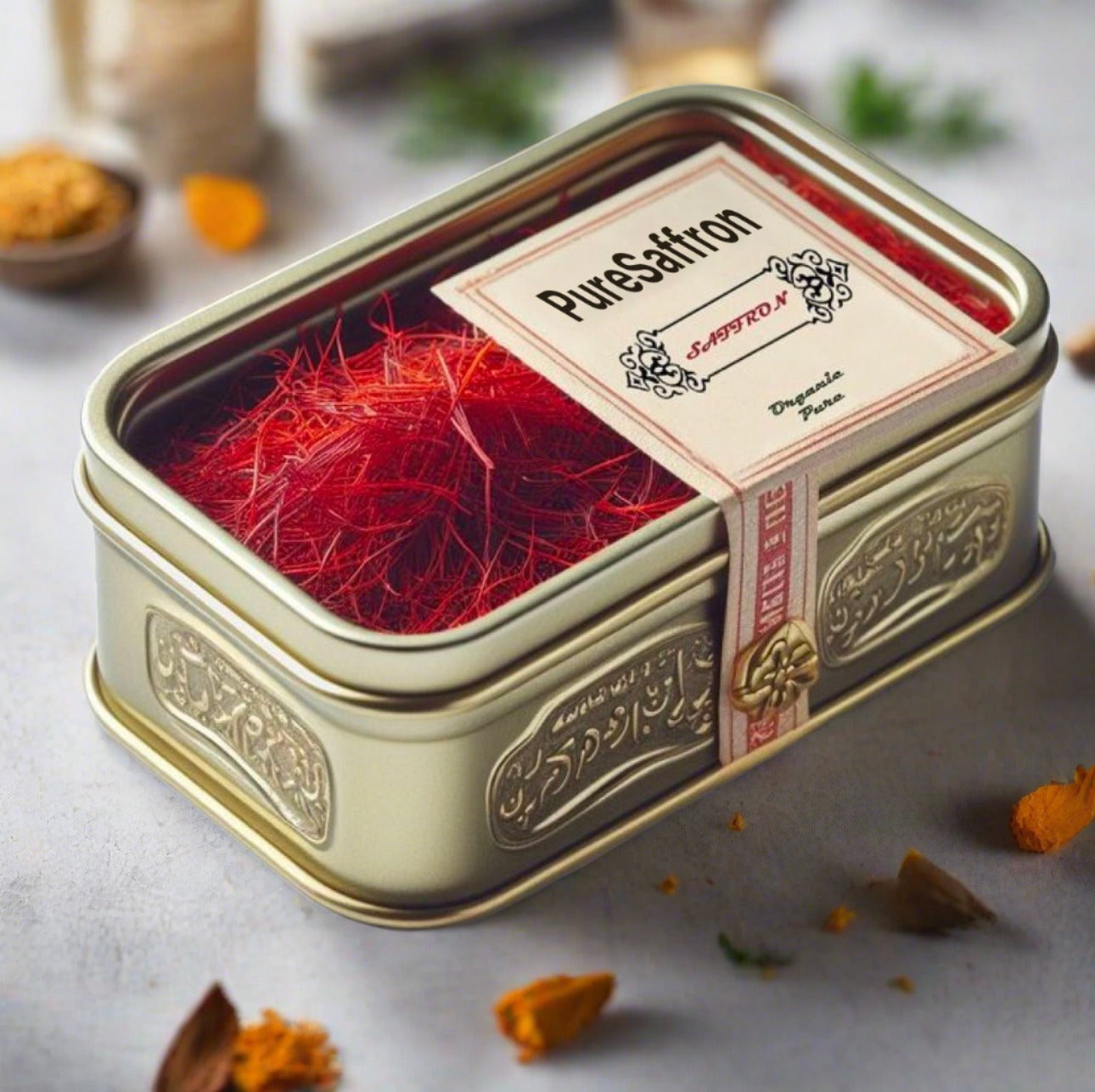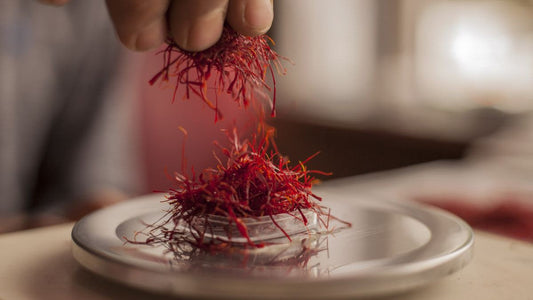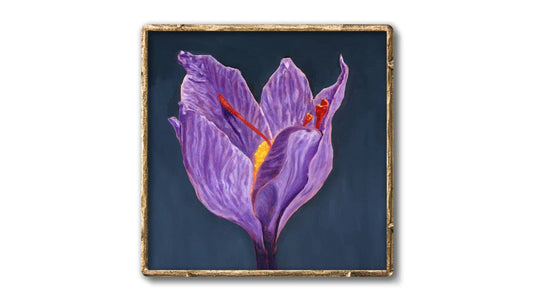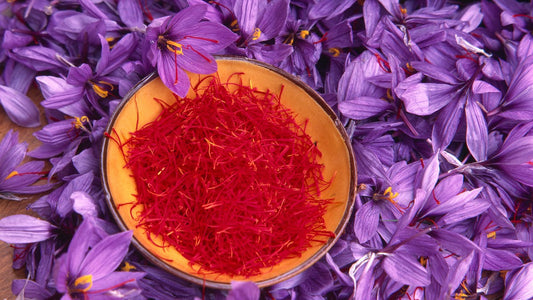
Saffron in Baking: Transform Your Recipes with This Golden Spice
Ara OhanianShare
Saffron, often referred to as the "golden spice," has been cherished for centuries for its vibrant color, unique flavor, and countless culinary applications. While it’s widely known for its use in savory dishes like paella and risotto, saffron is equally a game-changer in baking. Whether you’re crafting cakes, cookies, or breads, saffron can elevate your baked goods to an entirely new level of sophistication. In this blog, we’ll explore everything you need to know about using saffron in baking, from its flavor profile to the best techniques for incorporating it into your recipes.
Why Use Saffron in Baking?
Saffron isn’t just a fancy ingredient—it’s a flavor powerhouse. Known for its delicate floral notes, subtle sweetness, and earthy undertones, saffron adds depth and complexity to baked goods. Here’s why saffron is worth considering in your baking adventures:
- Unique Flavor: Saffron’s flavor is unlike any other spice. Its floral and slightly honeyed taste pairs beautifully with sweet ingredients like vanilla, cardamom, and citrus.
- Vibrant Color: Saffron imparts a rich golden-yellow hue, making your baked goods look as stunning as they taste.
- Versatility: From cakes and cookies to breads, muffins, and even pastries, saffron works well in a wide variety of baked goods.
- Aromatic Appeal: The aroma of saffron is intoxicating and elevates the sensory experience of any dessert or baked treat.
How to Use Saffron in Baking
Incorporating saffron into your baking requires a bit of preparation to ensure its flavor and color are fully released. Follow these steps to get the most out of this luxurious spice:
1. Choose High-Quality Saffron
Not all saffron is created equal. Always look for pure, high-quality saffron threads for the best results. Avoid powdered saffron as it’s more likely to be adulterated. To purchase premium saffron, check out our Persian Pure Saffron, known for its exceptional quality and authenticity.
2. Bloom the Saffron
Blooming saffron is the key to unlocking its full potential. Here’s how you can do it:
- Crush the saffron threads gently using a mortar and pestle or your fingers.
- Soak the crushed threads in a small amount of warm liquid, such as milk, water, or cream, for 10-15 minutes. This releases its flavor, aroma, and color.
- Add the bloomed saffron, along with the liquid, to your recipe.
3. Use Sparingly
A little saffron goes a long way. Typically, 10-15 threads (or a pinch) are enough for most baking recipes. Overusing saffron can make your dish bitter, so moderation is key.
Baking Ideas with Saffron
Wondering where to start? Here are some popular baked goods that can be enhanced with saffron:
- Saffron Cake: Infuse your sponge cake with saffron for a luxurious twist. Pair it with cardamom or rosewater for an extra layer of flavor.
- Saffron Cookies: Add saffron to shortbread or butter cookies for a golden hue and delicate aroma.
- Saffron Breads: Enrich your bread dough with saffron to create golden loaves, buns, or rolls.
- Saffron Cheesecake: Blend bloomed saffron into your cheesecake batter for a unique and elegant dessert.
- Saffron Muffins: Upgrade your breakfast muffins by adding saffron, along with flavors like lemon or almond.
Tips for Baking with Saffron
While saffron is relatively easy to use, there are a few tips to keep in mind to ensure success:
- Pair with Complementary Flavors: Saffron pairs beautifully with vanilla, almond, lemon, honey, rosewater, and spices like cardamom and cinnamon.
- Use Room-Temperature Ingredients: When incorporating saffron into batters or doughs, ensure your eggs, butter, and other ingredients are at room temperature for even mixing.
- Experiment with Quantities: Start with a small amount of saffron when trying a new recipe. You can always adjust the quantity in future batches.
- Store Properly: Keep your saffron in an airtight container, away from light and moisture, to preserve its potency.
Health Benefits of Saffron in Baking
Beyond its culinary appeal, saffron offers several health benefits when incorporated into your diet. Here’s what makes saffron a healthier choice in baking:
- Rich in Antioxidants: Saffron contains crocin, safranal, and kaempferol—compounds that protect your cells from oxidative stress.
- Mood-Boosting Properties: Saffron is known for its potential to enhance mood and alleviate symptoms of mild depression.
- Promotes Digestion: Saffron can aid in digestion, making it a great addition to rich, indulgent desserts.
FAQs About Saffron in Baking
- 1. How much saffron should I use in baking? A small amount—usually 10-15 threads or a pinch—is enough for most recipes. Start small and adjust as needed.
- 2. Can I use saffron powder instead of threads? While saffron powder can be used, it’s best to use threads for authenticity and to avoid adulterated products.
- 3. What flavors pair well with saffron in baking? Saffron pairs beautifully with vanilla, almond, citrus (like lemon and orange), honey, rosewater, and cardamom.
- 4. Can I add saffron directly to the batter? It’s better to bloom saffron in warm liquid before adding it to your recipe to release its full flavor and color.
- 5. Does saffron lose its flavor when baked? No, saffron retains its flavor even after baking, as long as it’s properly bloomed before use.
Ready to elevate your baking game? Start experimenting with saffron today! To ensure you’re using the highest quality saffron, visit our Persian Pure Saffron product page and bring the magic of this golden spice to your kitchen.
